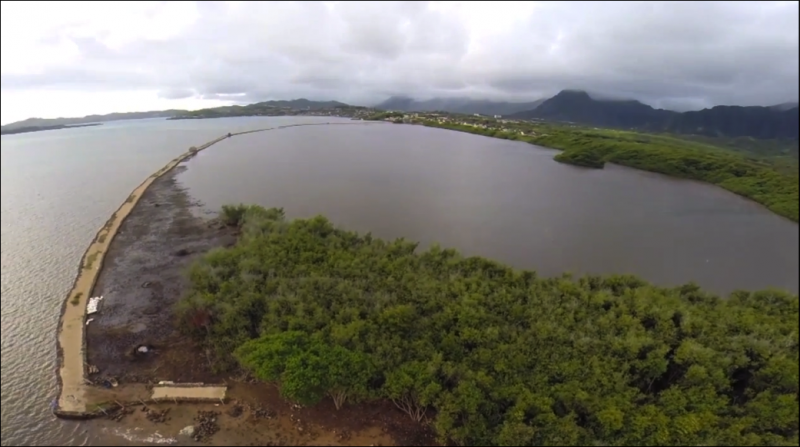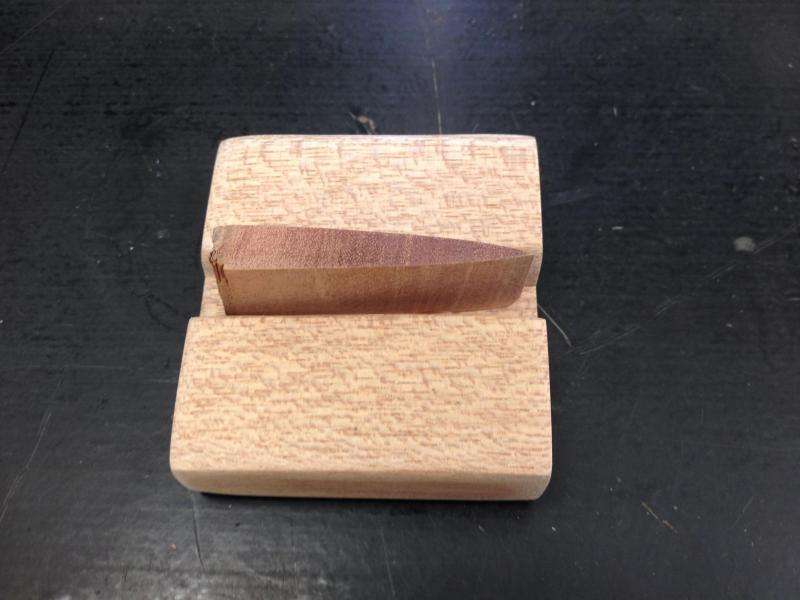Undergraduates make discoveries in Hawaiʻi from mountain to sea

Original scientific research by two recent graduates from UH Mānoa's Global Environmental Science (GES) undergraduate program has shed new light on Hawai'i's past and current natural environment.
Camilla Tognacchini's senior research project began with the goal to assess how the removal of invasive mangroves affect the health of Heʻeia Fishpond, a 600- to 800-year-old productive fishpond on the windward side of Oahu. During the two-month study period, which included a mangrove removal effort, Tognacchini and mentor (Oceanography Professor Margaret McManus) monitored salinity, water clarity and water movement in the fishpond, as well as weather conditions including rainfall, wind speed and direction, and atmospheric pressure. By fortune, the study period also captured the effects of three tropical storms – Wali, Iselle and Julio – thus expanding the scope of the study to include the effects of anthropogenic, as well as natural perturbations on the health of ecosystem.
He'eia Fishpond can serve as a model to quantify impacts of watershed management to the coastal ocean. The study indicates how essential pond management and watershed management are in protecting coastal ocean resources.
Hawaiian fishponds are unique and advanced forms of aquaculture found nowhere else in the world. Hawaiian coastal waters have been, and continue to be, subject to major anthropogenic impacts from land use changes, which have altered the characteristics of the coastal environment.
"Increased ocean temperatures increase the frequency of tropical cyclones near Hawaiʻi," said Tognacchini. "It is critical to have an understanding of how increased temperature and rainfall affect our coastal waters. With this understanding, areas like Heʻeia Fishpond can be properly managed to mitigate future climate variability."

From the curious mind to resource managers and community planners, many are interested in understanding how local climate has varied in the past. Scientists have long known that the form of carbon – that is, which isotope of carbon – a plant prefers to take in during photosynthesis can be influenced by environmental factors, such as rainfall.
As a GES student, Justin Thayer worked with mentor and Oceanography Professor Axel Timmermann to evaluate whether the carbon isotopic composition of 'ōhi'a trees at Hakalau, Mauna Kea, on Hawaiʻi Island could provide a reliable indicator of past climate conditions. Thayer and Timmermann's work established that 'ōhi'a may indeed be a window into historical conditions on Mauna Kea.
Said Thayer, "Given the numerous parameters that influence the Hawaiian climate, elucidating the climate history of the Hawaiian Islands is pertinent to understanding and predicting future climate conditions. Since ʻōhiʻa grows in a wide range of climate types and given its potential long lifespan, the carbon isotope signature of ʻōhiʻa may be the perfect tool to provide high-resolution reconstructions of the climate history in the Hawaiian Islands."
Provided by University of Hawaii at Manoa





















